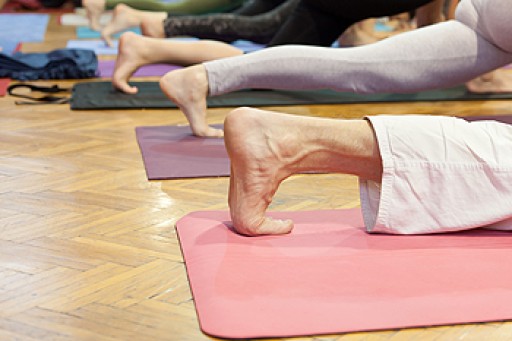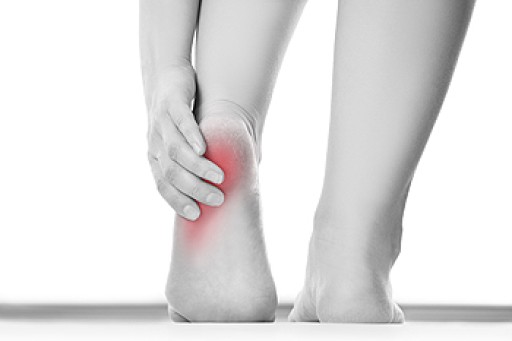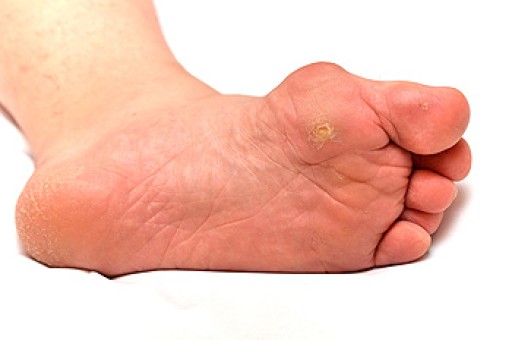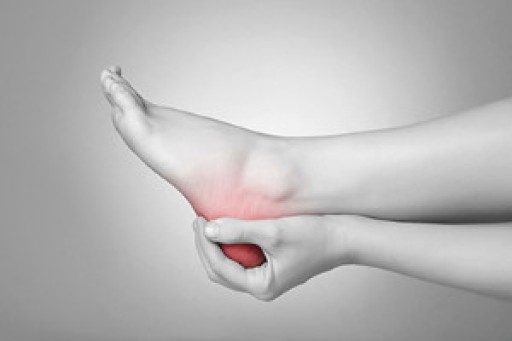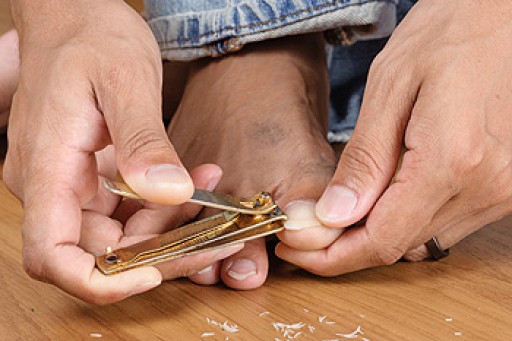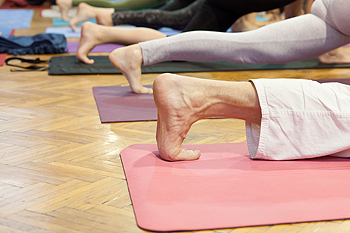 When proper care of the feet and ankles are maintained, the overall health of the body may be positively affected. The alignment of the body is affected by how we walk and stand, and research has shown that practicing yoga may be an option in ensuring the body remains strong. If the feet are not properly cared for, specific foot conditions may develop as a result of this, possibly including heel spurs, bunions, or plantar fasciitis. There are several parts of the feet that may be strengthened as a benefit of a yoga practice, and these may include the inner and outer heel, in addition to the pinky and big toe mound areas. An important portion of performing yoga includes standing with the feet flat on the floor and making sure the weight of the body is evenly distributed on the four corners of the foot. When this is accomplished, lift the arches. This may strengthen the muscles of the ankles and feet. If you would like additional information about the benefits of stretching the feet, speak to a podiatrist.
When proper care of the feet and ankles are maintained, the overall health of the body may be positively affected. The alignment of the body is affected by how we walk and stand, and research has shown that practicing yoga may be an option in ensuring the body remains strong. If the feet are not properly cared for, specific foot conditions may develop as a result of this, possibly including heel spurs, bunions, or plantar fasciitis. There are several parts of the feet that may be strengthened as a benefit of a yoga practice, and these may include the inner and outer heel, in addition to the pinky and big toe mound areas. An important portion of performing yoga includes standing with the feet flat on the floor and making sure the weight of the body is evenly distributed on the four corners of the foot. When this is accomplished, lift the arches. This may strengthen the muscles of the ankles and feet. If you would like additional information about the benefits of stretching the feet, speak to a podiatrist.
Stretching the feet is a great way to prevent injuries. If you have any concerns with your feet consult with one of our podiatrists from Foot Health Center of Merrimack Valley. Our doctors will assess your condition and provide you with quality foot and ankle treatment.
Stretching the Feet
Stretching the muscles in the foot is an important part in any physical activity. Feet that are tight can lead to less flexibility and make you more prone to injury. One of the most common forms of foot pain, plantar fasciitis, can be stretched out to help ease the pain. Stretching can not only ease pain from plantar fasciitis but also prevent it as well. However, it is important to see a podiatrist first if stretching is right for you. Podiatrists can also recommend other ways to stretch your feet. Once you know whether stretching is right for you, here are some excellent stretches you can do.
- Using a foam roller or any cylindrical object (a water bottle or soda can will do), roll the object under your foot back and forth. You should also exert pressure on the object. Be sure to do this to both feet for a minute. Do this exercise three times each.
- Similar to the previous one, take a ball, such as a tennis ball, and roll it under your foot while seated and exert pressure on it.
- Grab a resistance band or towel and take a seat. If you are using a towel, fold it length wise. Next put either one between the ball of your foot and heel and pull with both hands on each side towards you. Hold this for 15 seconds and then switch feet. Do this three times for each foot.
- Finally hold your big toe while crossing one leg over the other. Pull the toe towards you and hold for 15 seconds. Once again do this three times per foot.
It is best to go easy when first stretching your foot and work your way up. If your foot starts hurting, stop exercising and ice and rest the foot. It is advised to then see a podiatrist for help.
If you have any questions, please feel free to contact one of our offices located in North Andover, and Tewksbury, MA . We offer the newest diagnostic and treatment technologies for all your foot care needs.

